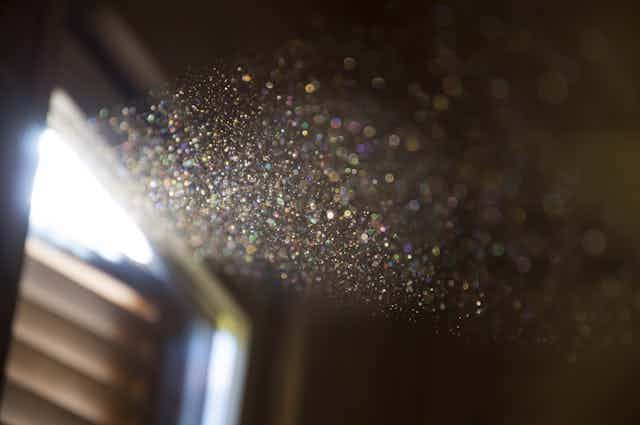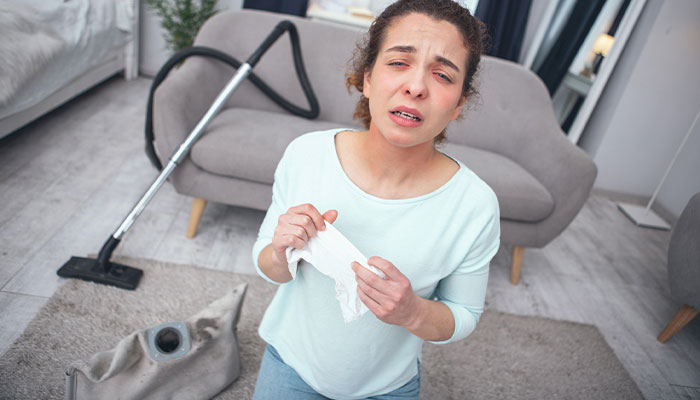Microplastics in Household Dust: Health Risks for Children and Effective Cleaning Tips
Microplastics in Household Dust: Health Risks for Children and Effective Cleaning Tips
Household dust may seem harmless, but recent studies have shown that it can contain microplastics—tiny plastic particles less than 5 millimeters in size. These particles are shed from synthetic textiles, plastic furniture, toys, and everyday products. Children are especially vulnerable to microplastic exposure through inhalation, ingestion, and skin contact. In this blog post, we will explore how household dust containing microplastics can impact children's health and offer practical cleaning tips to minimize exposure.
Why Are Microplastics in Dust a Problem for Children?
Children are more susceptible to microplastic exposure for several reasons:
- Frequent Hand-to-Mouth Activity: Young children often put their hands and toys in their mouths.
- Closer Proximity to the Floor: Dust accumulates on floors where children play and crawl.
- Developing Immune and Respiratory Systems: Their bodies are less capable of filtering and detoxifying harmful particles.
Health Risks of Microplastics in Household Dust
Research indicates that inhaling or ingesting microplastics can have several health consequences, including:
1. Respiratory Issues
- Asthma and Allergies: Microplastics can trigger respiratory inflammation, leading to asthma attacks or allergic reactions.
- Chronic Cough and Wheezing: Inhaled particles may irritate the respiratory tract.
- Reduced Lung Function: Long-term exposure could impair lung development in children.
2. Gastrointestinal Problems
- Digestive Discomfort: Ingested dust particles may cause irritation and inflammation in the gastrointestinal tract.
- Endocrine Disruption: Chemicals like BPA and phthalates from plastic dust can interfere with hormone regulation.
- Gut Microbiome Imbalance: Disrupted microbial balance may lead to digestive disorders.
3. Immune System Impairment
- Chronic Inflammation: Prolonged exposure to microplastics can weaken the immune response.
- Increased Infection Risk: Inflammatory stress can make children more prone to infections.
How to Reduce Microplastic Exposure from Dust
Reducing exposure to household dust containing microplastics requires consistent cleaning and mindful choices. Here are some practical tips:
1. Use High-Efficiency Vacuum Cleaners
- HEPA Filters: Choose vacuums with HEPA filters to trap fine particles and microplastics.
- Vacuum Regularly: At least twice a week in high-traffic areas and children’s play zones.
- Wet Mopping: After vacuuming, mop floors with water to catch any remaining particles.
2. Maintain Clean Indoor Air
- Air Purifiers: Use purifiers with HEPA filters to reduce airborne plastic particles.
- Ventilation: Regularly air out rooms to minimize dust buildup.
- Avoid Synthetic Air Fresheners: Some contain plastic-based micro-particles.
3. Wash Fabrics Frequently
- Wash Toys and Soft Surfaces: Clean plush toys, pillows, and carpets regularly.
- Avoid Synthetic Textiles: Choose natural fibers like cotton and wool for bedding and rugs.
- Low-Temperature Washing: Reduces fiber shedding from synthetic fabrics.
4. Minimize Plastic Use in the Home
- Replace Plastic Furniture: Opt for wood, metal, or glass alternatives.
- Safe Toy Choices: Select toys made from natural materials rather than plastic.
Effective Cleaning Routine for Minimizing Microplastics
- Vacuum with HEPA Filter: Cover all floor surfaces and upholstery.
- Wet Mop Floors: Use a damp cloth or microfiber mop to capture dust.
- Dust Surfaces with Damp Cloth: Avoid dry dusting, as it can spread particles into the air.
- Clean Air Filters Regularly: Ensure your HVAC system’s filters are up to date.
- Wash Textiles Often: Including curtains, carpets, and soft toys.
Final Thoughts
While eliminating microplastics entirely from your home is nearly impossible, taking proactive cleaning measures can significantly reduce your child’s exposure. By using effective cleaning methods and minimizing plastic usage, you can create a healthier living environment for your family. Stay mindful of household dust and take practical steps to protect your children’s health.
Amazon best seller






Comments